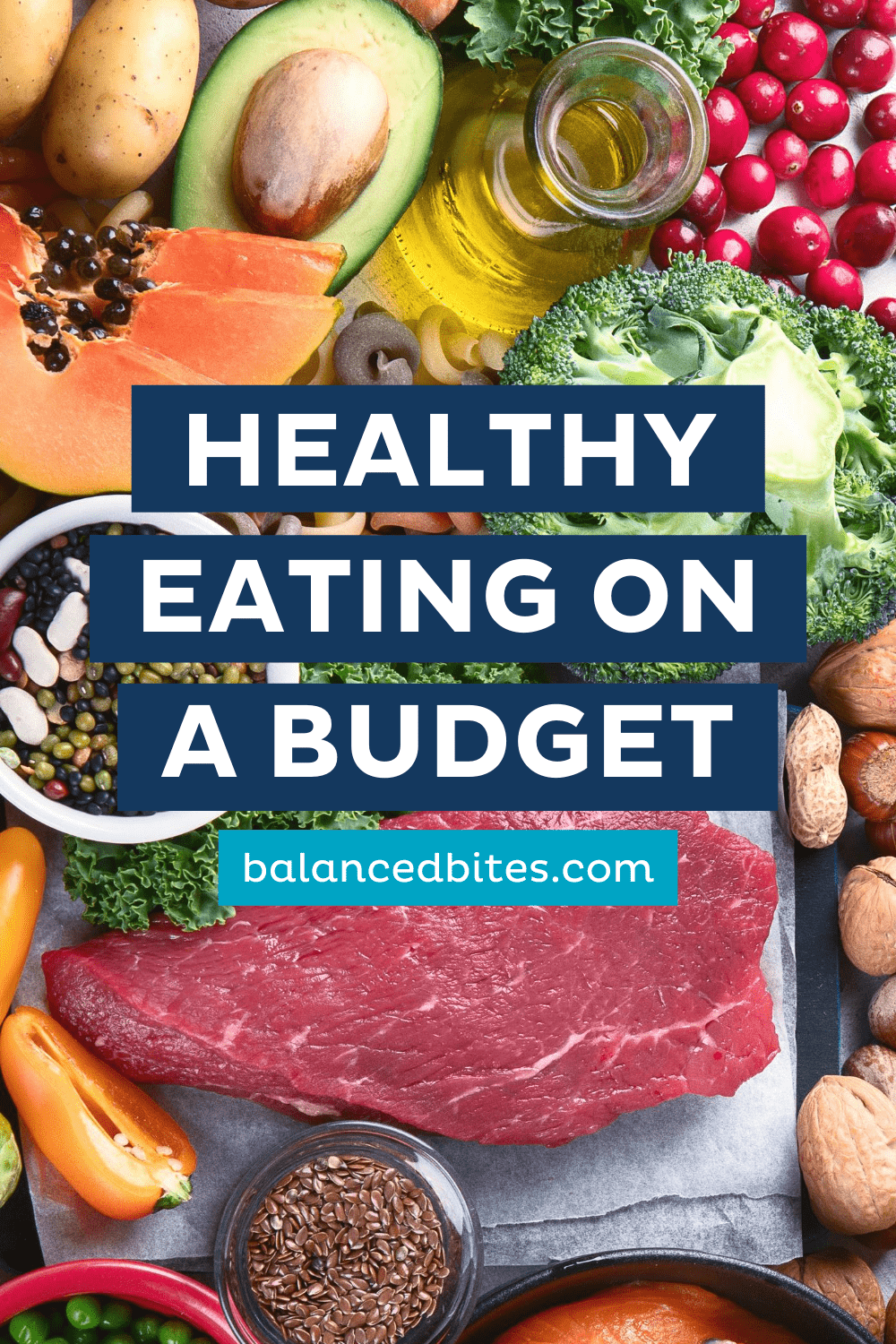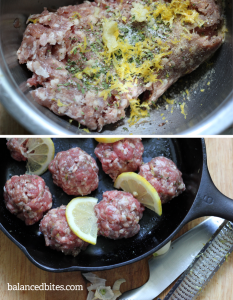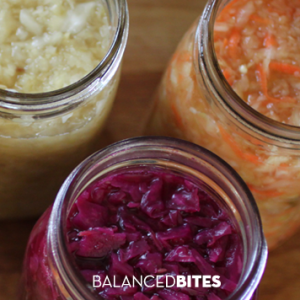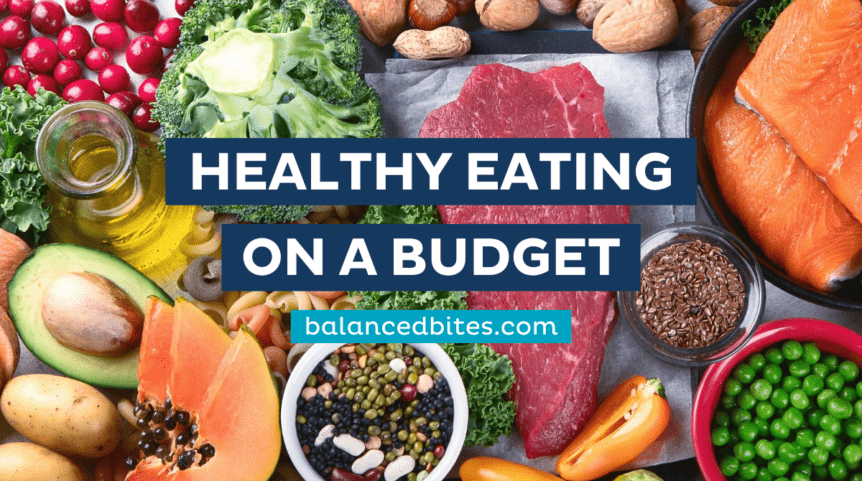 I've covered this in my book Practical Paleo, in a bit more detail, but it seems we can never share enough information and tips for making eating real, whole foods easier for as many people as possible. So, in light of new readers hitting the blog, I decided to share with you some more tips of my own, as well as many user-contributed tips for healthy eating on a budget.
I've covered this in my book Practical Paleo, in a bit more detail, but it seems we can never share enough information and tips for making eating real, whole foods easier for as many people as possible. So, in light of new readers hitting the blog, I decided to share with you some more tips of my own, as well as many user-contributed tips for healthy eating on a budget.
Some of these tips are directly grocery-shopping money-savers, while others are going to challenge you to rearrange your budgeting priorities to allow for more dollars towards food each week and month. I realize that many of you are not in a position to make those changes – and those points are not directed at you.
Also, be sure to check out my video on eating Paleo on a budget – there's lots of helpful info to keep your budget on track!
Buy locally and in-season.
Food that you buy from a local farmer is fresher, and generally less expensive since there are no additional transport charges that are normally factored in for items like fresh produce from other countries (kiwis from New Zealand, avocados from Mexico, etc.). Additionally, if you can buy directly from the farmer outside of a farmers' market, you'll likely get the best deal possible since there is no middle-man at all. Farmers' markets are often pricey to sell at, so be aware of this when you baulk at prices of items and try to buy directly as often as possible. I know that, for example, my local farmers' market in San Francisco (CUESA at the Ferry Building) carries a hefty fee for each vendor, but the crowd is huge and I'm sure they all sell very well each week.
 Buy larger, less popular cuts that work well when made in bulk, as roasts, or in braised/slow-cooker recipes.
Buy larger, less popular cuts that work well when made in bulk, as roasts, or in braised/slow-cooker recipes.
This often seems to make people feel like they're buying something “less-than” since it's not a steak, but the reality is that less expensive cuts of meat that are slow-cooked are not only some of the best tasting, but also some of the healthiest. Cooking foods at lower temperatures generally makes them easier to digest, which is also a very good thing. And, I'm a huge fan of meatballs and burgers, as evidenced as well by recipes within Practical Paleo, so go on ahead and get into some ground meat, will ya? I eat ground meat very often myself – probably more so than any whole cuts.
Recipes: Braised Beef Shanks, Lamb Osso Buco, Greek Style Lamb Meatballs
Buy in bulk when items are on sale.
This is especially true for meats and fats like grass-fed butter and coconut oil. Whether it's via an online merchant, in stores like Whole Foods where grass-fed ground beef often goes on a pretty hefty sale, or in bulk at Costco, this tactic is a great one all around. I actually encourage people to buy meat in bulk even if they aren't as budget savvy because it doesn't take much space to store it if you invest just a little bit of money in a good drop or chest freezer. You can often find a freezer via a site like Craigslist, NextDoor, or Facebook Marketplace locally, but stores like Best Buy also sell new ones for pretty reasonable prices considering how much money you'll save on meat when you can purchase more than a few pounds at a time. I recently bought several pounds of grass-fed butter from Whole Foods when it was on sale for $1 off each, then froze it for later when I was ready to clarify it. This approach also guarantees you'll have meat and quality fats on-hand at all times.
Cook in bulk so that what you buy in bulk is not wasted.
Many of you with busy lives and families know how hard it can be to cook an entire meal from scratch for a family every night of the week. When you buy in bulk, and cook in bulk, you guarantee you're using up everything you purchased, rather than letting any go to waste. Be sure to stock up on freezer and oven-safe glass containers that are durable and useful in reheating in the oven or toting to work.
Find a local pasture-raised animal farmer, become his/her friend, and go in on meat shares with friends and neighbors.
This is hands-down the best way to purchase meat. It's the most cost-effective and also yields the highest quality food. If you aren't going to grow it yourself, this is your next best bet! It's also always less expensive to buy directly than to have any sort of middle-man involved. This approach also requires an extra freezer as you'll not only be getting a lot of meat at once, but often your farmer will freeze it before it even gets to you to preserve its freshness.
For more on supporting local farmers, click here!
 Buy and prepare organ meats.
Buy and prepare organ meats.
They're often less expensive since most people are not buying them and are extremely nutrient dense. If you really want to get the most nutrient-density-bang-for-your-buck, organ meats are where it's at! Liver, heart, kidneys, brain, sweetbreads, adrenals, etc. You name it, they're almost always richer in micronutrients than our old favorite: muscle meat.
Not sure how to cook organ meats? Here are some recipes from a few trusted Paleo chefs in the blog-o-sphere as well as one of my own:
Chicken Liver Paté (Balanced Bites)
Chicken Liver Meatballs (Fed + Fit)
Bangin' Liver (Mary Shenouda)
Garlic Fried Chicken Livers (Grazed & Enthused)
Make bone broth.
If you're looking for amazing minerals in your food, broth made from bones (or even from some veggies if that's your taste) will extract as many minerals from the food as possible. Minerals don't get destroyed when cooked but they will transfer to the water to make the broth an extremely cost-effective, nutrient-dense food. You can cook bones until they are gone if you want to make the absolute most of them! This is just another part of the ultimate nose-to-tail dining experience to enjoy alongside muscle meats and organ meats.
Here's my slow-cooker Mineral-Rich Bone Broth, and here's a broth recipe using a pressure cooker from Nom Nom Paleo.
 Ferment your own sauerkraut (or other food items).
Ferment your own sauerkraut (or other food items).
Fermented foods tend to be among some of the more expensive in the grocery store, but are some of the cheapest to make at home from very few ingredients. You can get a huge nutritional bang-for-your-buck by making your own sauerkraut, kombucha, or even fermented pickles.
I'll be writing a lot more about kombucha and other fermented goodies soon, but for now check out these at-home, good-bacteria-growing recipes:
Raw Sauerkraut (Balanced Bites)
Kombucha: How To Make Your Own Scoby (The Kitchn), DIY Kombucha, Second Fermentation (Cultures For Health)
How to Make Kefir (Cheeseslave)
Re-prioritize how you spend your money.
The constant struggle to be able to spend more money on food may ultimately come down to priorities. Do you have a nice car? A big home? An extensive cable TV package? What about a fancy coffee habit? Where are you spending your money that does not directly and positively impact your physical and emotional health that could be otherwise directed into it? Challenge yourself to look at your finances and see where you spend more than is really necessary, and perhaps a few dollars each week will reveal themselves as available for higher quality food.
And here are more tips from my readers:
- Use local butcher ads to make your meal plan.
- Buy pantry items (like nut flours) in bulk to save.
- Bake items using more “exotic ingredients” (like above-mentioned nut flours) less often.
- Grow a garden.
- Farmers markets!
- Shop at Costco.
- Fast.
- Roasted chicken = a few meals worth of meat, plus bones to make bone broth. All for around $12.
- Eat organic vegetables only from the list of The Dirty Dozen.
- Avoid convenience, pre-cut, and prepared foods.
- Don't waste parts of vegetables: use stalks of broccoli to make slaw, tops of beets or carrots can be juiced or used in broths.
- Keep backyard chickens.
- Hunt your own meat.
What are your favorite money-saving tips for eating healthy?


Comments 19
Very helpful, very informative. Especially love the organ meats, its Liver and bacon for tea tonight for me.
Great post, Diane!
I thought I’d share a recent anecdote from our family life. We all know a busy family often cuts corners in health because they’re busy. I don’t find that excuse acceptable. We’re as busy it gets: One of my kids has soccer practice 4 days/week after school, the other has gymnastics, both have piano lessons. Weekends are not down times for us. The soccer athlete has games on both Sat & Sun, both have Irish Step classes on Sat. Mom has a soccer game on Sun. I go to the gym 3-5 days a week, usually at 0530. I’m to cook in the family, as my wife works part time in order to schlep the kids all over the place. This weekend, in-between events I hit the local farm stand for tons of veggies (for ~$30) , made your bone-broth recipe, the crustless quiche, and 7# of meatloaf with grass-fed ground beef. I paid less for the grass-fed ground-beef because I buy in bulk from a local farmer. In fact, it was even cheaper than the factory crap I’d get at the grocery store. Between the quiche and meatloaf, that will feed all four of us for 2-3 days with no cooking beyond hitting the button on the microwave.
You don’t have to sacrifice money or time to eat healthy. You need to be practical, and plan. I’m damn good at the practical. I need a lot of work with the planning, but I’m getting there 🙂 Your book has some of the best “Oh my gosh, what the heck am I going to make for us to eat in 5 minutes” recipes I’ve seen in all the PaleoVerse.
Thanks for your book, I’ve only tried out 2 recipes so far (the meatload recipe was my own paleo-fied version from elsewhere) but flipping through it, I can tell I’ll be spending a lot more time in the kitchen with it !
With hat tipped to traditional cooking I agree that the frugal end of paleo should include lots of stews/soup and the like. Traditional british recipes are often stuff like that with bread on the side. Obviously we ditch the bread, and personally I make up for it with some extra veg in the meal. I need to tidy my kitchen up so it’s not such an embarrassment to be seen in the background of photos so I can share more of what I eat on the blog. From what I can tell much of what I eat is more at the frugal end of paleo.
Great tips! I’ll add that if you don’t hunt, make friends with a hunter and offer to help cut up/package their meat for a share. I watch for supermarket “manager specials” on produce (usually boxed or packaged) that only has a day or two till the sell-by date. “Sell by” and “use by” are two different dates, and you usually have several days to use the markdowns, depending on what it is. This is my exception to the “avoid precut, packaged” rule, as I’ve found perfectly tasty organic baby spinach or romaine for less than half price, and rainbow slaw (broccoli, cauliflower, carrot & cabbage mix) for as little as 79 cents. Make friends with the produce manager and ask when they usually do the markdowns.
These are great tips!
I also stock up on seasonal, local produce and freeze them for later use. Just chop them up, freeze on trays and then add into bags or containers. I especially like to make stir fry mixes as well as roasting mixes with whatever looks good that day.
p.s. loving Practical Paleo!
Christie,
Fantastic idea! I was just wondering what I was going to do when I no longer had a supply of fresh garden veggies. I think I’ll hit the farm stand this weekend and stock up!
Thanks!
I just got my first cow share on Wednesday. So far I have mixed feelings because there are so few steaks. We will see how it goes.
Hey! This is the third time visiting now and I really just wanted to say
I truley fancy looking through your site.
I’ve decided to bookmark it at delicious.com with your title: FAQs: How can I eat Paleo on a budget? | Balanced Bites | Holistic & Paleo Nutrition Education and your URL: http://blogbb.wpengine.com/2012/09/faqs-how-can-i-eat-paleo-on-a-budget.html. I hope this is alright with you, I’m making an attempt to give your good blog a bit more exposure.
Be back soon.
Have you ever tried water kefir as another option for fermented beverages? I believe it is less concentrated than milk kefir and heard it is a good alternative for those who are lactose intolerant or worried about the caffeine content of kombucha.
Any thoughts on water kefir?
Thanks!
Thank you for the Costco link. I had made my own (much smaller list), but the linked one is far better. I’m loving the podcast, btw, and plan on reviewing it in iTunes soon!
Fantastic blog! Do you have any tips and hints for aspiring writers?
I’m hoping to start my own site soon but I’m a little lost on everything.
Would you propose starting with a free platform like WordPress or go for a paid option?
There are so many choices out there that I’m completely confused .. Any tips? Bless you!
I’m starting a new online website directory and was wanting to know if I can submit your blog? I’m hoping to mature my directory
gradually by hand so that it maintains top quality.
I will make sure and put your website in the correct category and I’ll additionally use, ” FAQs: How can I eat Paleo on a budget? | Balanced Bites | Holistic & Paleo Nutrition Education” as your anchor text. Please make sure to let me know if this is acceptable with you by e-mailing me at: [email protected]. Cheers
This is one of the best paleo sites I have encounterd ever since I started my journey on paleo diet. Your articles are very informative and well organized. This site is so rich in resources – I will surely be a regular visitor of your site. I’m your avid fan now. Thank you for these budget tips. You have answered my major hurdle as a new paleo diet advocate, which is where to source out these recommended paleo foods. Glad you mentioned those online sites and yes I will have to try those organ meat recipes. I have been hearing about how ” nutrient packed” these meats are but never knew how to cook them. I ought to try your suggested recipes anytime soon.
Love your site.We shop at the Farmers Market,Sprouts and Costco.We own a deep freezer so we use our food saver and everything lasts for a very long time.
Good post. But here in I would like to put my thought that even paleo can be considered as in a normal budget provided there is a better planning and management of the budgeting structure. As a busy mom I have a lot to consider in the home, basically the expenses that comes in action on a daily basis. In fact it was unmanageable at times but I decided to go in a way which I manage to do in my office. I choose Replicon’s expense reporting software – http://www.replicon.com/olp/expense-reports.aspx which works out preferably in a well managed manner that the ongoing expenses come into consideration and I got lots more saving in terms of the expenses that tends to be a vital part of my family budgeting.
What is your kind of software basically to keep track and manage the expenses that comes in the way.
Why can’t I pin this to Pinterest?
Much cheaper than, better than, and without the political baggage of Costco is Zaycon Foods (ZayconFoods.com). They deliver from local farms to central events every couple of months. You preorder and prepay, then drive up and collect your meat. Their chicken is the best trimmed, best tasting I’ve ever had. For about half the price of anywhere else.
This is the argument I have with my mom daily! I love all the suggestions! For someone that is single and doesn’t know how to cook it makes some suggestions difficult! I’ve done Costco(hard to buy bulk), local shopping, in season, and recently growing my own garden(which is extremely hard) One thing I also did which wasn’t mentioned is contact the company of the food item I wanted and asked for coupons and/or samples, etc. Thanks so much!!
Glad this helps you out!